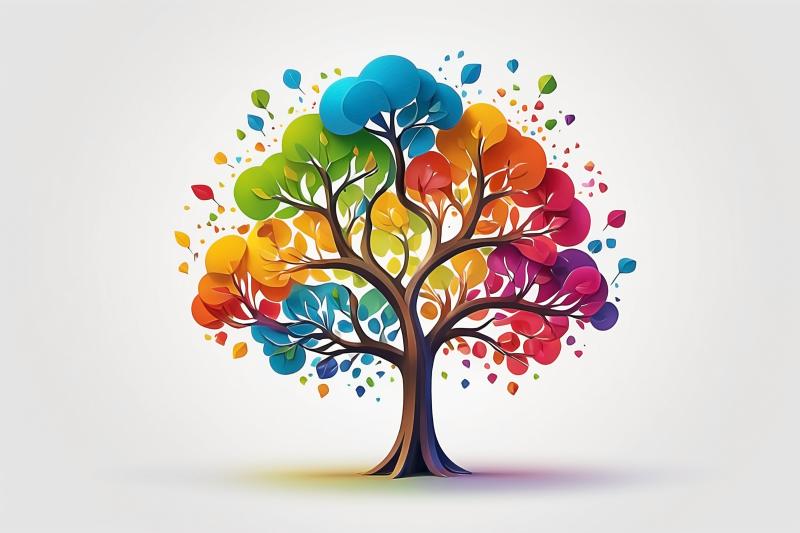How to Integrate Traditional Indian Art into Modern Web Design?

In the ever-evolving world of web design, integrating cultural elements into digital spaces has become a powerful way to create unique and memorable user experiences. For businesses and Web designers in India, incorporating traditional Indian art into modern web design is a way to pay homage to the country's rich cultural heritage while crafting visually appealing websites that stand out. This fusion of the old and new not only enhances the aesthetic value of a website but also creates a deeper connection with users who resonate with India’s artistic legacy. In this article, we'll explore how to effectively integrate traditional Indian art into modern web design, making your website redesign in India both culturally rich and contemporary.
1. Understanding Traditional Indian Art Forms
Before integrating traditional Indian art into web design, it's important to have a basic understanding of the various art forms that are part of India's cultural tapestry. Some popular forms include:
Madhubani Art: Originating from the Mithila region of Bihar, Madhubani art is known for its intricate patterns and vibrant colors. It often features motifs from nature, mythology, and daily life.
Warli Art: Hailing from Maharashtra, Warli art is characterized by its simple, monochromatic, and geometric patterns. It usually depicts scenes of rural life, rituals, and nature.
Pattachitra: This is a traditional scroll painting from Odisha and West Bengal, featuring mythological narratives and folklore in intricate detail.
Kalamkari: A textile art form from Andhra Pradesh, Kalamkari involves hand-painting or block-printing on fabric with elaborate designs and storytelling elements.
Rangoli: A decorative art form often created during festivals, Rangoli involves creating intricate patterns on the floor using colored powders, flowers, or rice.
By understanding these art forms, you can thoughtfully incorporate their elements into your India web design projects, ensuring authenticity and respect for the cultural significance behind them.
2. Using Color Palettes Inspired by Traditional Art
Color plays a crucial role in traditional Indian art, often symbolizing different emotions, seasons, and cultural practices. When integrating traditional art into modern web design, consider using color palettes that reflect the vibrancy of these art forms.
Warm and Earthy Tones: Colors like ochre, terracotta, and deep reds, often found in Madhubani and Warli art, can bring warmth and a sense of tradition to your web design.
Bright and Bold Hues: The vivid blues, greens, and yellows seen in Pattachitra and Rangoli can add a pop of color to your website, making it visually striking and engaging.
Monochromatic Schemes: For a more minimalist approach, you can draw inspiration from the black-and-white contrast in Warli art, creating a clean and modern look with a traditional twist.
By carefully selecting and blending these colors, you can create a cohesive design that feels both contemporary and rooted in Indian heritage.
3. Incorporating Traditional Patterns and Motifs
Patterns and motifs are central to many traditional Indian art forms, often symbolizing cultural beliefs, nature, and mythology. These elements can be subtly or boldly integrated into your web design, adding a layer of depth and storytelling.
Background Textures: Use traditional patterns as background textures to add richness without overwhelming the content. For example, a subtle Madhubani pattern can provide a decorative backdrop for a website focused on Indian crafts or heritage tourism.
Borders and Dividers: Incorporating intricate borders inspired by Kalamkari or Pattachitra around sections of your website can create a visually appealing flow, guiding users from one section to another.
Icons and Buttons: Custom icons and buttons inspired by traditional motifs, such as lotus flowers or paisleys, can be a unique way to integrate Indian art into functional elements of your website.
These patterns and motifs not only enhance the aesthetic appeal of your website but also tell a story, connecting the modern digital space with centuries-old traditions.
4. Combining Traditional Typography with Modern Design
Typography is a powerful tool in web design, and combining traditional Indian scripts with modern fonts can create a harmonious blend of the old and the new.
Custom Fonts: Consider creating or using custom fonts inspired by traditional Indian calligraphy or scripts, such as Devanagari or Tamil, for headings or key elements. This can add a cultural touch while maintaining readability.
Mixing Fonts: Pair traditional fonts with modern, sans-serif fonts to create a balanced look. For example, a website promoting Indian cultural events could use a traditional font for event titles and a clean, modern font for body text.
Cultural Symbols: Incorporate symbols from traditional Indian scripts, such as the Om symbol or mandalas, as decorative elements within the typography.
By thoughtfully combining traditional and modern typography, you can enhance the cultural resonance of your website redesign in India while ensuring it remains functional and user-friendly.
5. Enhancing User Experience with Indian Art-Inspired Elements
User experience (UX) is at the heart of effective web design. Integrating traditional Indian art into UX elements can create a more engaging and culturally resonant experience for users.
Interactive Elements: Incorporate interactive features, such as animated Rangoli designs or Madhubani-inspired loading screens, to create a memorable user journey. These elements not only add visual interest but also engage users through cultural storytelling.
Navigation Menus: Design navigation menus with traditional Indian art elements, such as Warli-inspired icons or Kalamkari-inspired dropdowns. This can enhance the visual appeal while making the navigation intuitive and culturally themed.
Responsive Design: Ensure that these traditional elements are seamlessly integrated into a responsive design, providing a consistent and immersive experience across all devices.
By focusing on user experience, you can create a web design that not only looks beautiful but also functions smoothly, keeping users engaged and connected to the cultural essence of the site.
6. Collaborating with Indian Artists and Designers
To truly honor traditional Indian art in your web design, consider collaborating with local artists and designers who specialize in these art forms. Their expertise can bring authenticity and a deeper understanding of the cultural significance behind each design element.
Commissioned Artwork: Work with Indian artists to create custom illustrations or patterns for your website. This not only supports local artisans but also ensures that the art is accurately represented.
Collaborative Design Process: Involve traditional artists in the design process, allowing their insights to guide the integration of cultural elements into the modern web design framework.
Cultural Workshops: Participate in or organize workshops with traditional artists to learn more about the techniques, meanings, and histories behind the art forms you wish to integrate.
Collaborating with Indian artists not only enhances the cultural authenticity of your design but also contributes to preserving and promoting traditional Indian art in the digital age.
Conclusion
Integrating traditional Indian art into modern web design is a creative and meaningful way to celebrate India's rich cultural heritage while producing visually striking and unique websites. Whether you’re working on a new project or considering a website redesign in India, the thoughtful incorporation of traditional elements can elevate your design, making it both contemporary and culturally resonant.
By understanding traditional art forms, using inspired color palettes, incorporating patterns and motifs, blending typography, enhancing user experience, and collaborating with local artists, you can create web designs that are truly reflective of India web design at its finest. As the digital landscape continues to evolve, this fusion of tradition and modernity will ensure that your web design remains relevant, engaging, and distinctly Indian.
Check Also: Educational Pathways for Aspiring Web Designers in India







Comments (1)
Wincer Song
16
APSense Founder
The fusion of traditional Indian art with modern web design is a fascinating concept. As someone interested in both technology and cultural heritage, I find this approach inspiring. It's a creative way to keep ancient art forms alive in the digital age while crafting unique, meaningful user experiences.